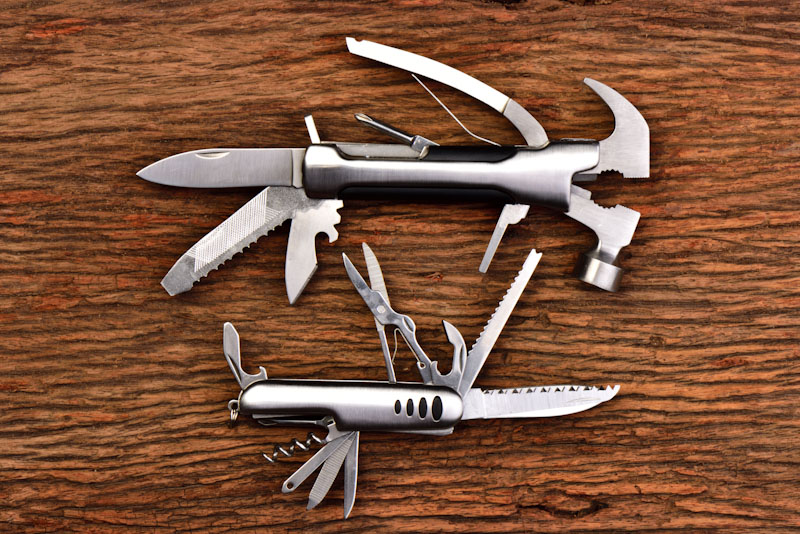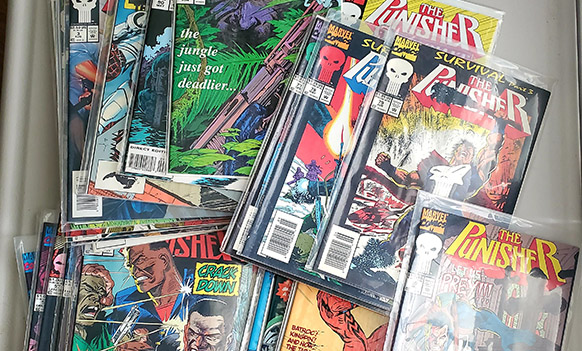Yeah, I know… it sounds hokey. The idea that we could make a keychain that would actually help us survive. We do survival kits in Altoid tins, make “survival bracelets” and everyone has their angle on some sort of survival gadget that is “the thing” to guarantee our survival, all by itself.
Okay, maybe I’m being a bit facetious there. But the worst survival situation is the one we’re unprepared for, right? That’s why we prepare. But are we prepared for all things? If we stop to think about it, we are basically prepared to survive a disaster that strikes when we are at home. If something happens when we are away from home, some of us have get home bags to help us get there; but if we’re out with someone else, and we’ve traveled there in their car, we might even have that. All we’ll have is what we’re carrying on our body; and I don’t see people walking around with an EDC bag when they go around their daily activities.
This is why people talk about their EDC (everyday carry). We all have one. Even non-preppers have an EDC. The game show “Let’s Make a Deal” has made famous the things women carry in their purses – their EDC. The question is, whether we are carrying things on our bodies, as part of our EDC, which will help us survive.
I propose to you, that there are things we can carry on a keychain, which will, in fact, help us to survive. It won’t be a full-blown survival kit; nor will it be enough to handle all situations. But for those times when we’re caught away from home, without a survival kit or GHB, the few things on your keychain could make a huge difference.
What Does a Survival Kit Really Need?
Let’s look at this logically, starting with the things we find in most survival kits. I’ve seen a lot of survival kits through the years and I’ve made quite a number myself. For any survival kit to maximize its effectiveness, it needs to be built for the specific circumstances it will be used in. Putting a survival fishing kit into a survival kit intended to be used if you’re caught in the downtown area of your city doesn’t make any sense, if there’s no place to fish.
The other thing that has to be taken into consideration is just how long the survival kit is intended to help you survive. We’re not talking an INCH bag here, where you’re going to go attempt to live off the wild. Most survival kits are really only expected to help you through two or three days, until you can get recued. In the case of an urban survival kit, you shouldn’t really need anything more than overnight. So, when we’re thinking of any sort of an urban survival kit, like our survival keychain, that’s the terms we’re thinking in, not living out in the woods for weeks at a time.
Typically, we try to build any survival kit so that it meets the top survival needs of warmth, water and food. But if we’re only talking overnight, we really don’t need to worry about food. While our stomach might think our throat has been cut, if we don’t eat; we can get buy for a lot longer than overnight, without food.
What about water? The word around the survival community is that we can live three days without water. Under some circumstances, that can be extended to five days; but probably not out in the open, especially in truly hot weather. Nevertheless, we can survive overnight, even without water.
But water is actually rather easy to find in the city. While it might become a serious problem in a longer-term survival situation or one which blankets the whole area, it probably won’t be for an overnight situation. If you truly think you’re going to have trouble finding water in the city, you could add a four-way hose bib key to your survival keyring; but unless you’re a maintenance worker, it’s going to look a little funny carrying that around.
What that leaves us with is dealing with the weather; which is really the focus of my survival keyring. There are other things on it too; but my main purpose was to give myself a way of keeping warm, in the midst of the city, should I need too. The other things I have added, have been more out of convenience, than anything else.
So, What’s on My Keyring?
Ok, let’s get down to brass tacks. Just what do I have hanging on my survival keyring?
Since my biggest concern is being able to start a fire, the main thing I have on my survival keychain is a miniature cigarette lighter. It’s shaped like a capsule and works like the old Zippo lighters do. That makes it extremely reliable, just as long as I make sure to refill it with lighter fluid every once in a while. Should I forget, gasoline can be used in those Zippo lighters, as a replacement.
To go along with the lighter, I carry another pill capsule container filled with oil. The oil works as an effective fire accelerant, not burning as quickly as fuels, but burning quickly enough to start a fire. The slower burn also means that it will burn longer, helping ensure that I can get a good fire started with only the one capsule full of oil.
Those are the main things I created the keyring to carry, since I don’t smoke and have some other reason to carry a lighter. But since I had it, I didn’t stop there. I’ve added a number of other useful items.
Micro-flashlight – I carry a tactical light, which I use all the time. But that doesn’t stop me from hanging another micro-flashlight on this keyring. It’s only 10 lumens; but if the battery goes out on my tactical light, I at least have a source of light. It has seen plenty of use.
Whistle – No, I don’t feel I need a rape whistle; that’s not what this is for. For those who don’t know, three blasts on a whistle are the international cry for help. Should I get caught somewhere, like under a flipped-over vehicle, this would give me a way of calling for help.
P-38 Can Opener – I’ve carried a P-38 since basic training, back when the Army still issued C-Rations. It’s still the most compact can opener ever invented. While food is not my top concern for overnight survival, if I find a can of food that I can eat, I’d like to be able to take advantage of it. I also find it useful in a variety of other situations, where having that can opener with me has been useful.
Handcuff Key – Okay, I’ve never used it; but I have handcuffs from some time back, and I keep them in my car. You never know when you’re going to have an altercation with a criminal and need to lock them up. So, I added it to the keyring.

Small Multitool – I’ve never been of the camp that says multitools are survival gear. On the other hand, they are extremely useful tools to have with you; as you never know when you’ll need a screwdriver or a pair of pliers. So, I’ve attached a small one, about 2” long, to my survival keychain. It gets plenty of use, paying its way. The knife blade serves as a backup for my pocket knife, in case something happens to it.
No Touch Door Opener Tool – I started carrying this back when COVID was a big concern, and it is clearly the one thing on my survival keychain that has gotten the most use. I can’t prove whether it helped protect me or not; but as a prepper, I’m of the mindset “better safe than sorry.” I still use it a lot, especially for public bathrooms, which I suspect are one of the worst places to find germs.
I’m sure there are other things, which other people could think of, to add to my keychain. But the point is that it’s my keychain. If you are one of those people, then perhaps the reason you’re thinking of that thing is because you should be carrying one for your needs. Each of us have unique circumstances, necessitating different things to help us navigate our days and get through any sudden survival situations. The point is finding the things which will help you, in your specific situation, with the plans that you need to implement, should you suddenly find yourself in a survival situation. By the way, although it’s clearly not part of my survival keychain, one of the things I always try to have with me is a rain poncho, even though I live in an arid part of the country. Hypothermia is still one of the biggest killers around; and hypothermia happens more from people getting wet, than from cold weather. Having a rain poncho can help keep your clothes dry, as well as acting as an emergency shelter. So, I keep one in my backpack (briefcase) which goes with me just about everywhere.
Read the full article here




